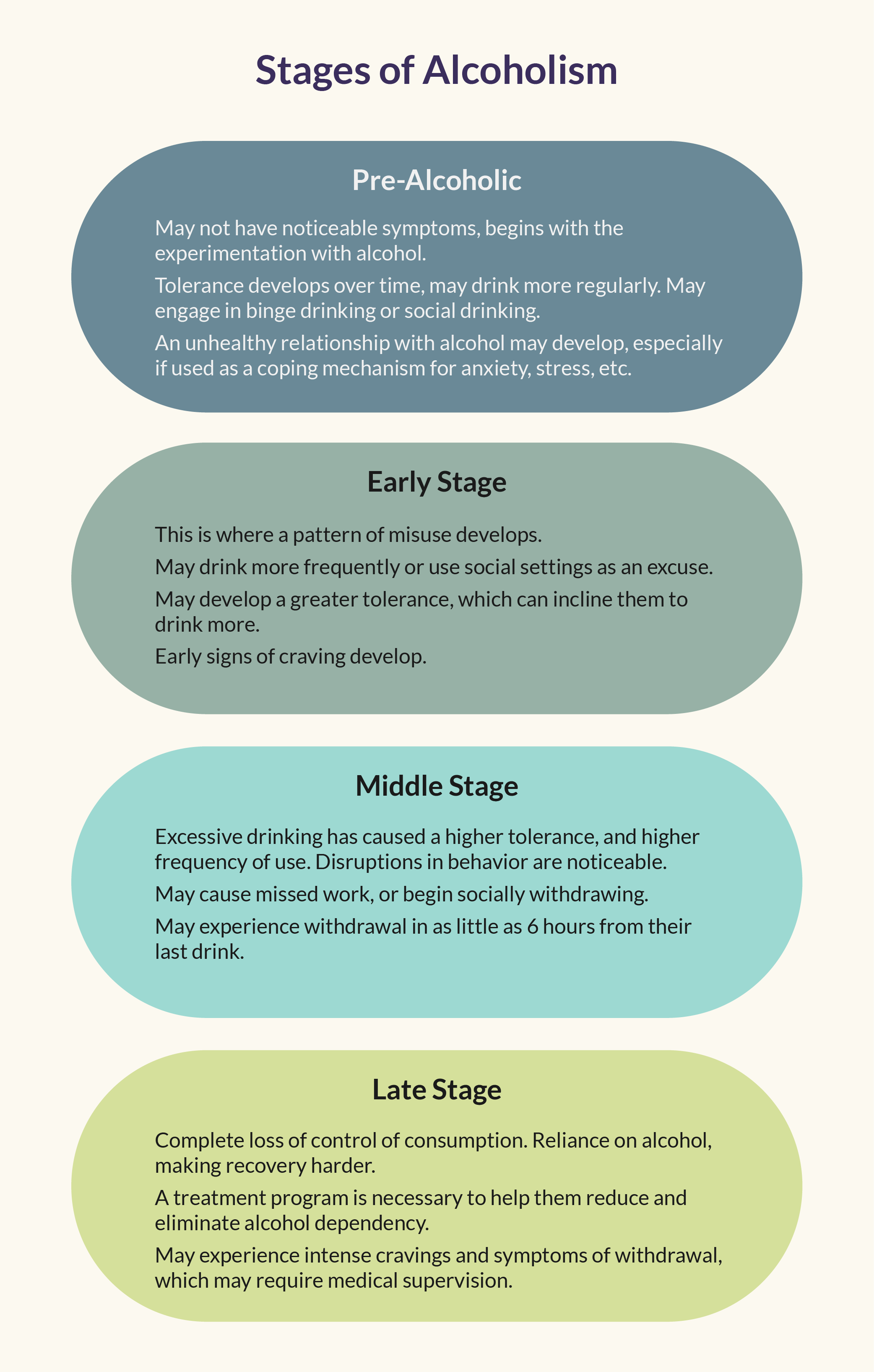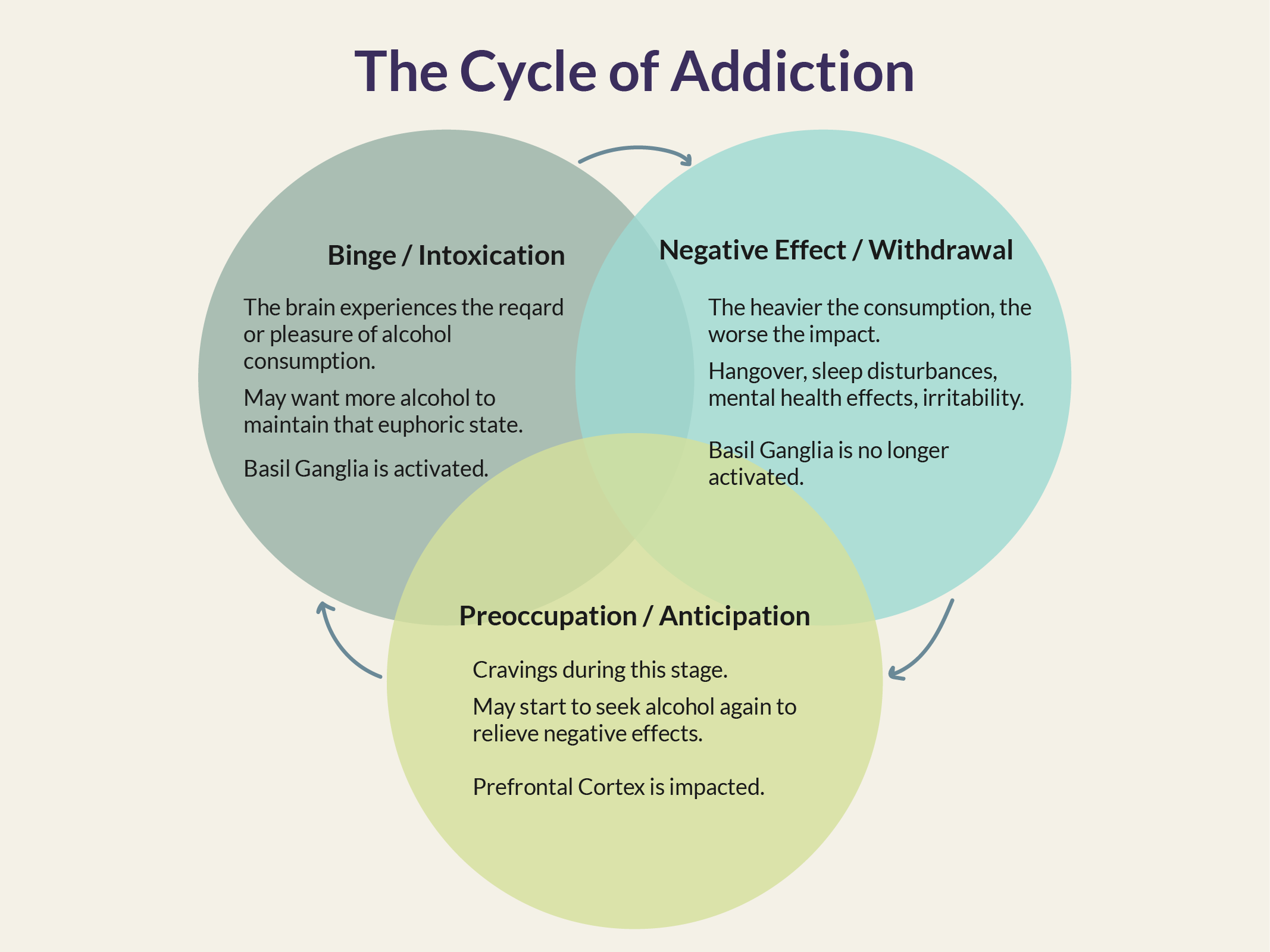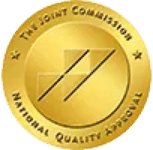The four stages of alcohol addiction date back to 1960, when alcohol abuse researcher Elvin Morton Jellinek published The Disease Concept of Alcoholism. Since then, these four stages have been used to identify the progression of alcoholism. Each stage focuses on changes mentally, physically, and behaviorally. While not everyone suffering from alcohol addiction experiences the same thing, the stages help understand the chronic relapsing condition.

Pre-Alcoholic
In the pre-alcoholic stage of alcoholism, there may not be noticeable symptoms. The stage begins when a person experiments with alcohol. During this stage, their tolerance develops over time, and the individual may begin to drink more regularly. This stage is also the stage where someone might engage in binge drinking or social drinking. Although social drinking may appear harmless, an unhealthy relationship with alcohol could develop, especially if the individual uses alcohol as a coping mechanism, such as to cope with social anxiety, stress, or other emotions.
Early Stage
Liver damage from alcohol often progresses silently, with symptoms appearing only after significant harm has occurred. Common signs include:
- Fatigue and weakness
- Jaundice (yellowing of the skin and eyes)
- Abdominal pain and swelling
- Nausea and vomiting
- Loss of appetite
- Unexplained weight loss
- Dark urine and pale stools
- Mental confusion and difficulty concentrating
Early detection is critical, as addressing liver damage in its initial stages can prevent further deterioration.
Middle Stage
In the third stage of alcohol addiction, excessive use of alcohol has caused a higher tolerance, as well as higher frequency of use. It can begin to lead to disruptions in behavior that are noticeable to others.
For example, someone may notice that a person is missing from work more often. This could be due to hangovers or other negative effects of alcohol after heavy drinking. If someone is feeling unwell, they’re more inclined to stay home and recover. In some cases, this causes them to drink again, just to cope with post-drinking effects on their body.
In another instance, they could begin to withdraw socially. While the early stage may see individuals seeking out social settings as an excuse to drink, the middle stage of alcohol addiction sees more social isolation.
Most notably, the middle stage of alcohol use disorder could see the effects of withdrawal. Those who drink more frequently could experience withdrawal symptoms in as little as 6 hours from when they had their last drink.
Late Stage
The final stage of alcoholism is when someone has completely lost control of their alcohol consumption. A person is reliant on alcohol during this stage, making the road to recovery harder. At this point, a treatment program is necessary to help the individual reduce and eliminate their dependency on alcohol. Even when they do not consume alcohol all the time, they could still experience intense cravings and symptoms of withdrawal. For those with serious alcohol abuse, the withdrawal symptoms may require medical supervision.
The Cycle of Addiction
In addition to the stages of becoming addicted to alcohol, there are also stages that make up the cycle of addiction. Alcohol use disorder (AUD) is a chronic condition that follows a repeating cycle. The cycle is best broken through treatment programs, such as a detox program followed by residential treatment. Here are the stages that make up the cycle of addiction.

Binge/Intoxication Stage
A person experiences the effects of drinking alcohol. In this stage, the brain experiences the reward or pleasure of alcohol consumption. It can lead to an individual wanting more alcohol to maintain the euphoric state. The part of the brain called the basal ganglia is activated in this stage. This part of the brain is responsible for reward processing, motor control, and cognitive functions. Through the consumption of alcohol, its reward system is activated.
Negative Affect/Withdrawal Stage
The heavier the consumption of alcohol in a single sitting, the worse it has an impact on your body and mind. In this stage, a person may experience a hangover. Sleep disturbances are caused by the person’s drinking. They may also feel mental health effects, like anxiety or irritability. Part of the reason for the negative effects in this stage is because the basal ganglia is no longer activated to process the rewards of alcohol consumption. The low feelings this stage causes can trigger someone to drink again.
Preoccupation/Anticipation Stage
Cravings are common in this stage of alcohol use. Because of the negative effects of stage two, a person might begin to seek alcohol again. In this stage, the prefrontal cortex is impacted. This is responsible for executive function, such as a person prioritizing in their decision-making. With the start of consuming alcohol again, the cycle begins over again with the binge/intoxication stage.
How to Break the Cycle of Alcohol Addiction
Ending the stages of alcoholism before they get too severe is crucial to avoiding the cycle of alcohol addiction. However, someone does find themselves in the cycle of addiction, there are ways to break it. Most importantly, it requires ending the consumption of alcohol. To do this safely often requires a detox program for those who are at risk of experiencing serious withdrawals. That way, the person will receive monitoring during withdrawal from medical professionals.
Following a detox or the end of drinking alcohol, inpatient and outpatient treatment programs are both offered. The type of program someone chooses depends on the severity of their addiction and what works best for their recovery.









